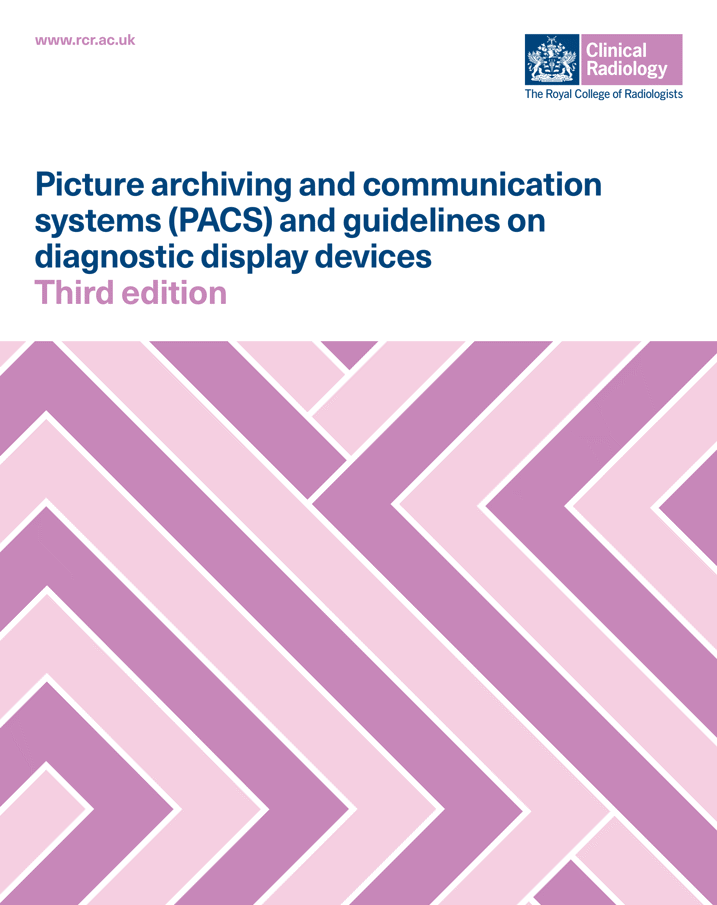Picture archiving and communication systems (PACS) and guidelines on diagnostic display devices Third edition
Date: 2019
Date of next review: 2023
Diagnostic images are reviewed in multiple settings and the specific requirements for diagnostic display devices are outlined dependent on whether this is primary diagnostic work, clinical review work or mobile review of radiology images. The importance of the viewing environment – physical and ergonomic – should always be taken into consideration alongside the performance of the diagnostic display devices. The current guidance incorporates relevant areas of and supersedes Picture archiving and communication systems (PACS) and quality assurance, second edition, which is now withdrawn.
This guidance forms part of a series produced by the Radiology Informatics Committee which aims to highlight rapid developments in information technology in radiology.
Key recommendations
- Primary diagnostic workstations should be equipped with a reliable display with at least three megapixels (MP) resolution, a luminance range of at least 1–350 candelas per square meter (cd/m2) which is regularly hardware calibrated such that it remains within 10% of the digital imaging and communications in medicine (DICOM) grayscale standard display function (GSDF).
- Clinical review displays should be at least 2 MP resolution with a luminance range 0.8–250cd/m2 and should be calibrated at least once a year to remain within 20% of the DICOM GSDF. Either hardware or perceptual calibration (using the Task Group 18 [TG18] test pattern) may be used.
- Mobile device displays should mainly be used in the absence of a primary diagnostic display. They should conform to the same standards as clinical review displays.
- When colour displays are used in radiology, they should still meet the grayscale calibration requirements for the given setting. The consistent use of the standard red green blue (sRGB) colour space is recommended to achieve uniformity across workplaces.
- Mammography is regarded as a specialist imaging situation requiring a higher resolution and brighter display unit.
- The viewing environment should be strictly controlled in the primary diagnostic setting. For clinical review, the environment should be controlled as best achievable.
- If consumer off-the-shelf (COTS) displays are chosen, a workplace must also operate and document a regular quality-control and calibration programme.
